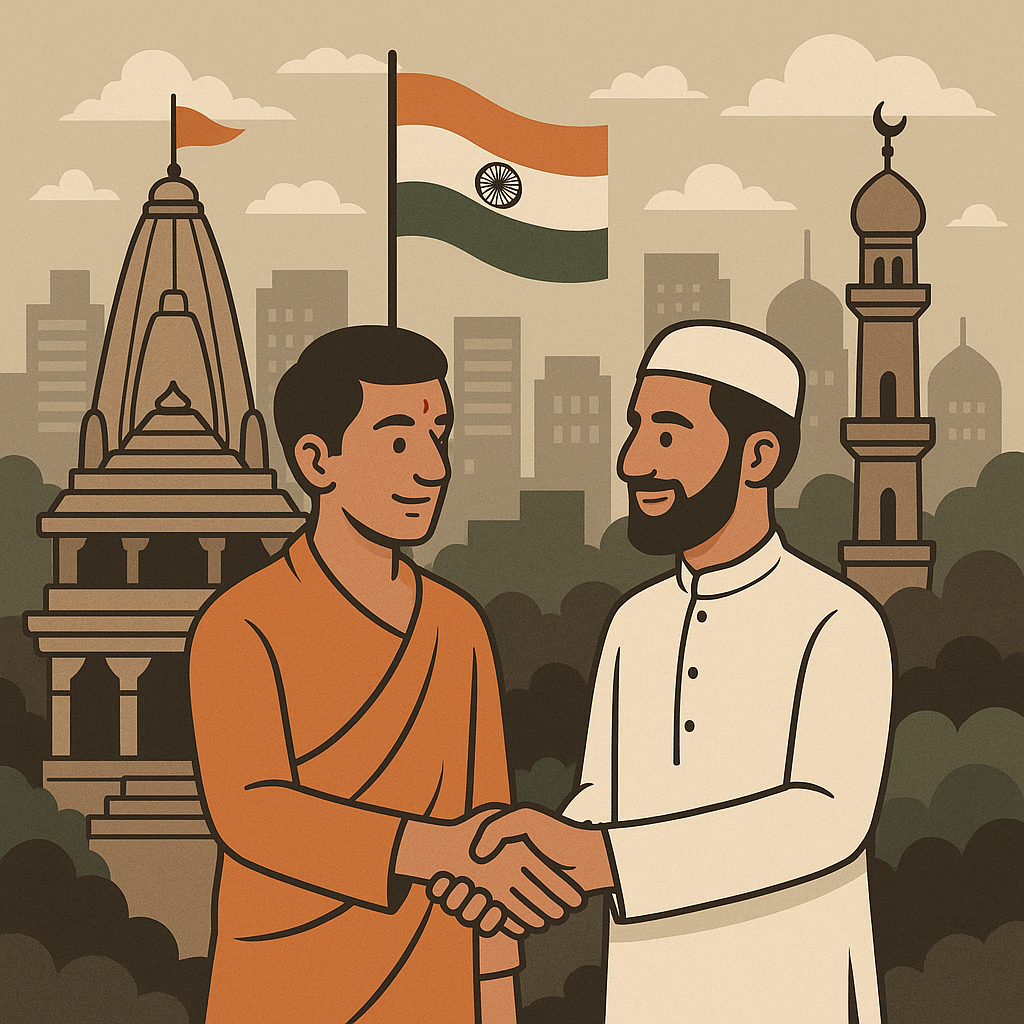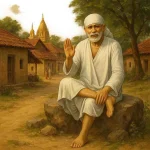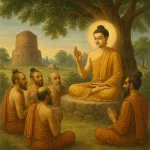Inter-Faith Alliances in India: Opportunities & Challenges in 2025
India, known for its extraordinary religious diversity, has always stood as a living example of coexistence. From ancient times, sages, saints, and reformers have promoted unity among people of different faiths. Yet, in a rapidly changing 21st-century world, the need for inter-faith alliances has never been greater. In 2025, as India continues to balance tradition and modernity, these alliances hold the potential to strengthen social harmony — but they also face complex challenges in a society where religion often intersects with politics, identity, and technology.
The Roots of Inter-Faith Harmony
The idea of inter-faith dialogue is not new to India. The country’s history is filled with examples of spiritual cooperation — from Emperor Akbar’s Din-i-Ilahi experiment to the teachings of Kabir, Guru Nanak, and Sant Tukaram, who all spoke of oneness beyond sects. The Indian ethos has long celebrated the concept of Sarva Dharma Sambhava — respect for all religions.
In modern times, this philosophy continues through initiatives by religious leaders, NGOs, and community networks that encourage dialogue among Hindus, Muslims, Christians, Sikhs, Buddhists, and Jains. Festivals, inter-religious seminars, and youth-led cultural programs have become platforms for celebrating shared values such as compassion, peace, and service.
The Changing Context of 2025
As India steps deeper into the digital and global era, inter-faith alliances are gaining new significance. The younger generation, more connected through social media, is exposed to diverse beliefs and cultures. They are less inclined to see religion as a boundary and more likely to view it as a shared moral compass.
At the same time, globalization and migration have created spaces where communities of multiple faiths interact more frequently — in workplaces, schools, and civic spaces. In cities like Delhi, Bengaluru, and Hyderabad, youth-led organizations are hosting “dialogue circles” where people from different faiths discuss spirituality, climate change, gender equality, and social responsibility together.
These new alliances are less about conversion or dogma and more about collaboration — working together for a common social or environmental cause while respecting each other’s faith-based identities.
Opportunities: Building Social Capital Through Faith
Inter-faith cooperation offers a unique opportunity to strengthen India’s social fabric. Religious institutions, which have deep influence and trust among communities, can act as powerful partners in national development.
For example, when temples, mosques, gurdwaras, and churches unite for social causes — such as disaster relief, education, or healthcare — they demonstrate the spiritual principle of seva (selfless service). Faith-based groups can help tackle pressing issues like poverty, gender discrimination, and environmental degradation by mobilizing moral energy and community participation.
Moreover, inter-faith alliances can help reduce misconceptions that often arise between religious groups. By encouraging dialogue, they promote empathy, critical thinking, and a shared sense of belonging. In schools and universities, inter-faith programs can build a foundation of tolerance and civic responsibility among students — shaping the next generation of peacebuilders.
Challenges: The Realities on the Ground
However, the path toward inter-faith harmony is not without obstacles. In 2025, the biggest challenge remains polarization — both social and digital. Misinformation on social media, hate narratives, and political manipulation of religious sentiments continue to create distrust among communities.
Another challenge is the lack of structured platforms for consistent dialogue. Many inter-faith efforts remain event-based — successful for a day, but rarely sustained over time. Religious leaders may express goodwill, yet grassroot collaboration often struggles to take shape due to administrative, ideological, or financial barriers.
Additionally, younger Indians, while open-minded, are also overwhelmed by the fast pace of life. Many prefer individual spirituality over organized religion, which means fewer people are participating in formal inter-faith programs. Bridging this gap between personal spirituality and collective action will be essential if such alliances are to grow stronger.
Technology: A Double-Edged Sword
In 2025, technology plays a dual role. On one hand, it amplifies hate speech and division through algorithms that reward sensationalism. On the other, it offers an unprecedented tool for inter-faith connection. Online platforms can host digital peace campaigns, live dialogues, and awareness drives that reach millions instantly.
Young faith leaders and social media influencers are already using their platforms to counter prejudice and spread messages of unity. Podcasts, short videos, and online storytelling are replacing traditional sermons — making faith conversations more relatable and youth-friendly.
If used responsibly, technology can transform inter-faith work from niche initiatives into national movements.
The Way Forward: A Spiritual Model for Modern India
India’s spiritual tradition offers a timeless framework for peaceful coexistence. The Upanishadic idea of Ekam Sat Vipra Bahudha Vadanti — “Truth is One, the wise call it by many names” — is perhaps more relevant today than ever. In a nation of over a billion people and hundreds of belief systems, inter-faith alliances are not optional; they are essential for sustaining democracy and unity.
For this to happen, religious institutions must move beyond symbolism and actively collaborate on social issues. Schools and universities should integrate inter-faith education into their curriculum. And the media must play a constructive role by highlighting stories of cooperation rather than conflict.
Towards a Shared Future
The strength of India has always been its ability to hold diversity together with dignity. In 2025, inter-faith alliances represent the next step in that journey — a chance to rediscover the moral core that unites all religions.
The opportunity lies in seeing faith not as a source of separation, but as a shared language of humanity. The challenge lies in overcoming fear and mistrust. If India succeeds in nurturing genuine inter-faith understanding, it can set an example for the entire world — proving once again that unity in diversity is not just an ideal, but a living reality.
~Religion World Bureau









